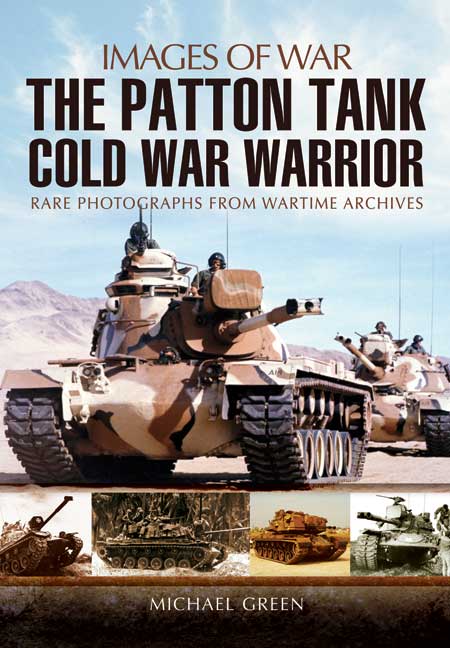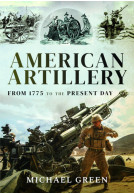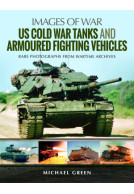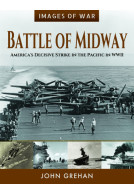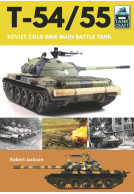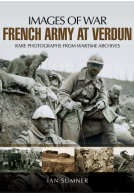The Patton Tank (ePub)
Cold War Warrior
Imprint: Pen & Sword Military
Series: Images of War
File Size: 55.4 MB (.epub)
Illustrations: 250 black and white images
ISBN: 9781783378531
Published: 24th September 2012
In the latest addition to the successful Images of War series, American tank expert Michael Green brings his encyclopedic knowledge and vast collection of images to bear on the evolution of the Patton tank which, in its many variants, formed the armoured mainstay of the US and many foreign armies for some 40 years.
The early Cold War years saw the need for a more powerful tank than the Sherman and Pershing tanks. The first Patton tanks (M46) were converted Pershings which saw service in Korea. To counter the Soviet military threat, the M47 with a more effective 90mm gun and turret went into mass production. In total 8,576 were produced.
The new M48 entered service in 1953 with the M47s pawned off mainly to NATO allies whose armies were being rebuilt. Despite serious initial deficiencies, over 12,000 gasoline-powered examples (M48A1/A2/A2C) came into service. These were followed by the diesel-powered M48A3 which the US Marine Corps and US Army took to South Vietnam.
In the late 1950s the US Army began fielding the diesel-powered M60 series with its British-designed 105mm gun. By 1982 over 15,000 units had been built in four basic models. Simultaneously the M48A5 Patton tank with the same 105mm gun and diesel engines went into service with US Army Reserve and National Guard and friendly foreign armies.
As this fascinating book reveals, Pattons were made into specialist role vehicles, be they anti-aircraft, flame throwers, recovery or combat engineer. Additionally customer countries, notably Israel, made their own modifications to their M48s which remained in service until the late 1990s. The wealth of superb images makes this fine work particularly attractive to modellers and wargamers.
A key strength of this book is the impressive number of pictures of the inside of the tank, something that isn’t always the case in books on tanks. This gives some idea of how the crew actually fit inside these cramped vehicles, and the impressive array of controls confronting most of them. The photographs are well captioned, with key features identified, again putting this book ahead of many picture books.
History of War
Read the full review here
As with the bulk of the IOW, the photography is well selected, the captions add a great deal of background information and the main chapter text makes this one of the best books currently available on the Patton family.
Military Modelling magazine, July 2017 – reviewed by Owen Cooper
A valuable photo resource for modelers: walkarounds, detail shots, plenty of variants. A comprehensive look at all things Patton.
FineScale Modeler magazine, May 2017
A new addition to the Images of War series, covering the Patton tanks of the Cold War. This is a fascinating book that reveals
Firetrench
the development from the M47 to the M60 and the specialist support variants. Good text and outstanding images, a Must Read book.
Read the full review here.
Here is another AFV title in the prolific 'Images of War' series from Pen and Sword books. This time one written by the well known author on AFVs Michael Green.
Military Modelling
What the title refers to are the M46, M47 and M48 tank series. It starts with the Patton Tank Genesis, covering the M26 Pershing, the heavy tanks that was developed in to the M46 which forms the topic of chapter 2. This involved new engine and transmission plus a new version of the 90mm gun for the main armament. Those plus other detail changes intended for the older inventory of over 2000 M26 tanks to be. Not all were done though, as many M26s were shipped hurriedly to Korea, where they were joined by about 200 of the upgraded M46 as well. As with each chapter, these are well illustrated with good clear photos, with detail both inside and out.
The M47 came next, as a response to the Cold War and growth of the Warsaw Pact. This newer, more reliable vehicle had over 8,000 built during the production run, and Micheal gives details of the benefits of the new tank and the modifications it went through to improve ut further. This is followed by the M48 series (chapter 4), where the M48 itself and M48A1 suffered from high fuel consumption and thus a short range on the internal fuel load, only about 70 miles. A solution illustrated in photos is a bank of 4 fuel drums mounted on a rack at the back of the tank, not unlike the Soviet solution seen on their T55/T62/T72 series. Eventually the engine was replaced with a diesel power pack to give us the M48A3, which also went to War in Vietnam and this is covered in Chapter 5. The Patton did see further development to make the M48A5 (chapter 6) before it was replaced in front-line units with the M60 and then Abrams. Older tanks were sold off to other nations supported by the US, and the M48, with more improvements through combat experience, were used by the Israeli IDF in particular. The M47 went to many European countries in NATO.
The final chapter deals with the other variants on the Patton chassis, such as the Bridgelayer, the M88 recovery vehicles and even the less than successful Sgt York AA tank. An interesting and very readable text from Michael makes for a good read, plus the captions for the well chosen photos are equally well done.
Another fine photo reference in the Images of War series, and ideal if you are interested in these Cold War Warriors and in the development story of the US Battle Tank.
About Michael Green
Michael Green is the author of numerous acclaimed books in the Images of War series, including Armored Warfare in the Vietnam War, The Patton Tank: Cold War Warrior, M1 Abrams Tank, Allied Tanks of the Second World War, Allied AFVs of the Second World War, Axis Tanks of the Second World War, Axis AFVs of the Second World War, American Military Helicopters, US Airborne Divisions, USMC in the Vietnam War, US Armored Divisions of the Second World War, US Marine Corps in the Korean War, American Artillery, NATO and Warsaw Pact Tanks of the Cold War and Red Army Weapons of the World War.







